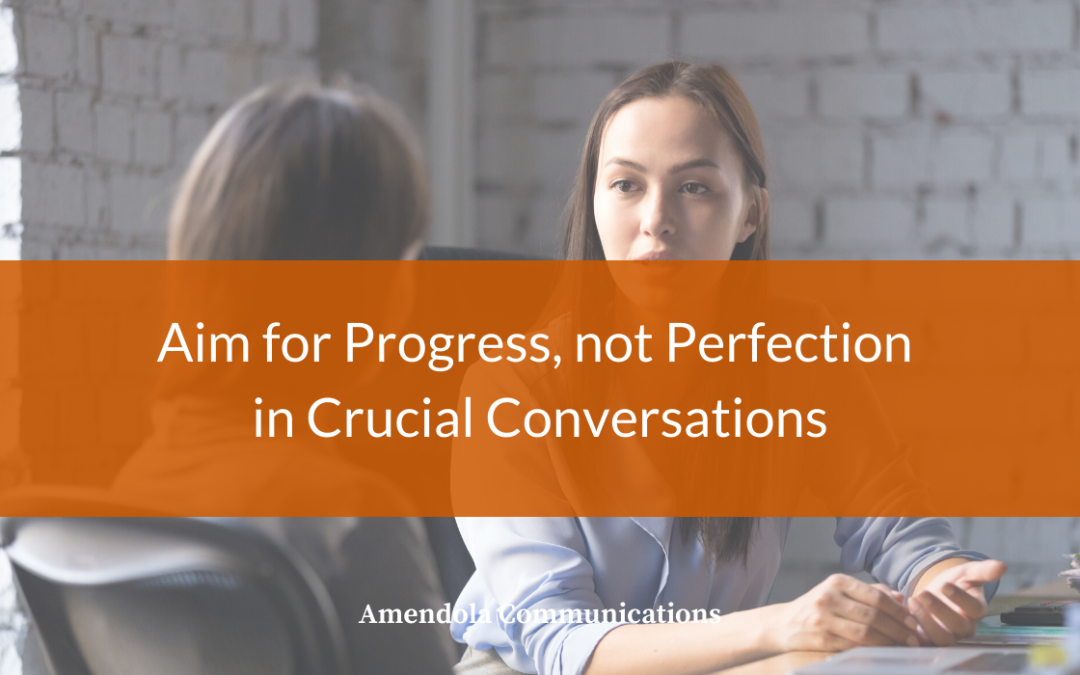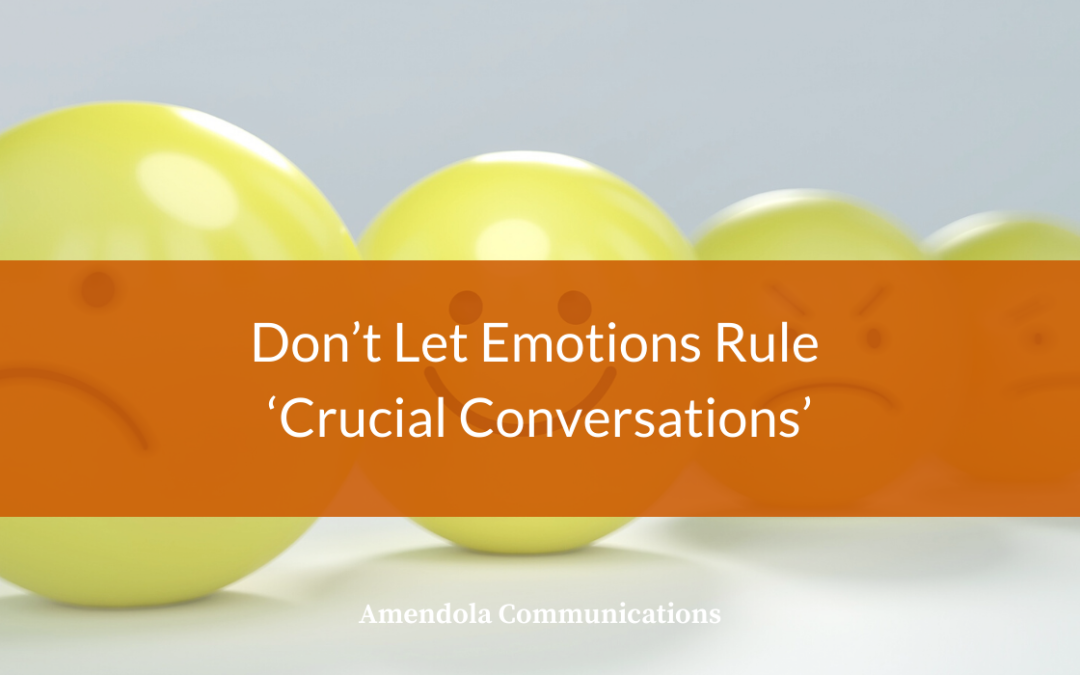
by Philip Anast | Jun 3, 2020 | Blog
In my last post, we learned that a key technique to resolving problems is fostering dialogue with another person, or even a group of people. This wisdom comes from the best seller, “Crucial Conversations.”
Having the other person’s best interests in mind goes a long way toward resolving work and personal issues. That seems like a no-brainer. But when emotions get the best of us, conversations can go sideways in a hurry. Truly serving another person’s interests and seeing her point of view start with building mutual purpose and mutual respect during crucial conversations.
Here are some questions to ask oneself before engaging in dialogue:
- Do others believe I care about their goals?
- Do they trust my motives?
- What would I do now if I really wanted to see
results?
You may be saying to yourself: I’m committed to those values, but I can’t get the other person to come around. The authors, through their countless use cases and observations of crucial conversations, admit that sometimes one has to create a mutual purpose. That may involve finding more meaningful goals, or longer-term ones.
It also means adroitly combining confidence, humility and skill to make people feel that they can safely contribute their thinking to a conversation.
Confidence enables various opinions to be contributed to the “pool of meaning” without threat or emotion; humility underscores that others have valuable inputs to contribute; and skill avoids the Fool’s Choice we learned about earlier.
Here are some phrases and questions to consider as you pursue mutual purpose:
- “I want to talk about what each of us likes and doesn’t like. That way, we’ll be able to see what we need to do to improve and why”
- “It seems like we’re both trying to force our view on each other”
- “I commit to staying in our conversation until we have a solution that satisfies both of us”
- “I’m beginning to feel you are upset with me. Did I do something to anger you?”
- “Does anyone see it differently? Am I missing something here?”
What the authors make abundantly clear in imparting their techniques is they’re not advocating that every decision be made by consensus. “Dialogue does not equal decision-making.”
The real focus is on solving problems and building relationships. And to achieve those things, you need everyone to feel comfortable adding information and
perspective to a discussion.
When people are silent for fear of retribution or respond with vitriol, the results are the same: loss of safety and dialogue. But when they feel they can safely
contribute, the greater the possibility for true dialogue and resolution.
The ultimate goal in all of these techniques is to “aim for progress, not perfection.”

by Philip Anast | Apr 8, 2020 | Blog
There is no shortage of books on communication in the workplace to improve collaboration and maximize teamwork. Harvard Business Review also provides wonderful, well-researched articles that can help one improve communication and leadership capabilities.
But one book that I’ve read and re-read over the years stands out: “Crucial Conversations.” Perhaps the book stands out as much for improving communication and resolving differences in the workplace as for resolving issues in personal relationships.
Over the years, I’ve leaned on this book to help navigate difficult situations. For example, how do you tell someone trying really hard to do a good job that he isn’t cutting it? Or explaining to people that they have poor hygiene? Or telling your client CEO on a media tour that half of the six interviews canceled while you’re on the tour with him?
The authors explain what happens to our brains when conversations go from casual to crucial that is, when emotions grow heated, the stakes are high, and people are entrenched in their opinions. Let’s just say the blood flowing to the reasoning part of our brains gets detained.
An important element of a crucial conversation is making sure that those involved feel safe to share their opinions. If they don’t feel safe, they will flee to silence (not sharing information crucial to a problem and toward a decision) or to violence (making personal attacks that exacerbate the situation).
The authors say average communicators make a Fool’s Choice. They either choose to be brutally honest or silent. Great communicators, on the other hand, avoid the Fool’s Choice; they share absolute candor but with deep respect.
In the healthcare field Amendola Communications serves, nurses and other care team members often fall silent during critical situations that affect patient safety for fear of doctors and other authority figures. It’s situations like these, the authors assert, where none of us can remain silent.
While there is much to be gleaned from the book, here are some key recommendations:
- Don’t “wing” crucial conversations. “Perfect practice makes perfect”
- Fill the “pool” of meaning in a dialogue by making sure information flows freely
- Start with heart and stay focused on what you want for yourself, other people and your relationships (with emphasis on mutual purpose and mutual respect)
- The best at dialogue look at themselves and ask how they can improve their communication skills; they don’t see others as the source of all that’s wrong with the world
- Stay focused on achieving results and building relationships
The authors make an astute observation based on the hundreds of conversations they have studied or witnessed as communication consultants: The problem often is not the message (or bad news) delivered to people, but whether people feel safe hearing that message.
In my next post, we’ll learn about several skills tested by the authors to build mutual purpose.


